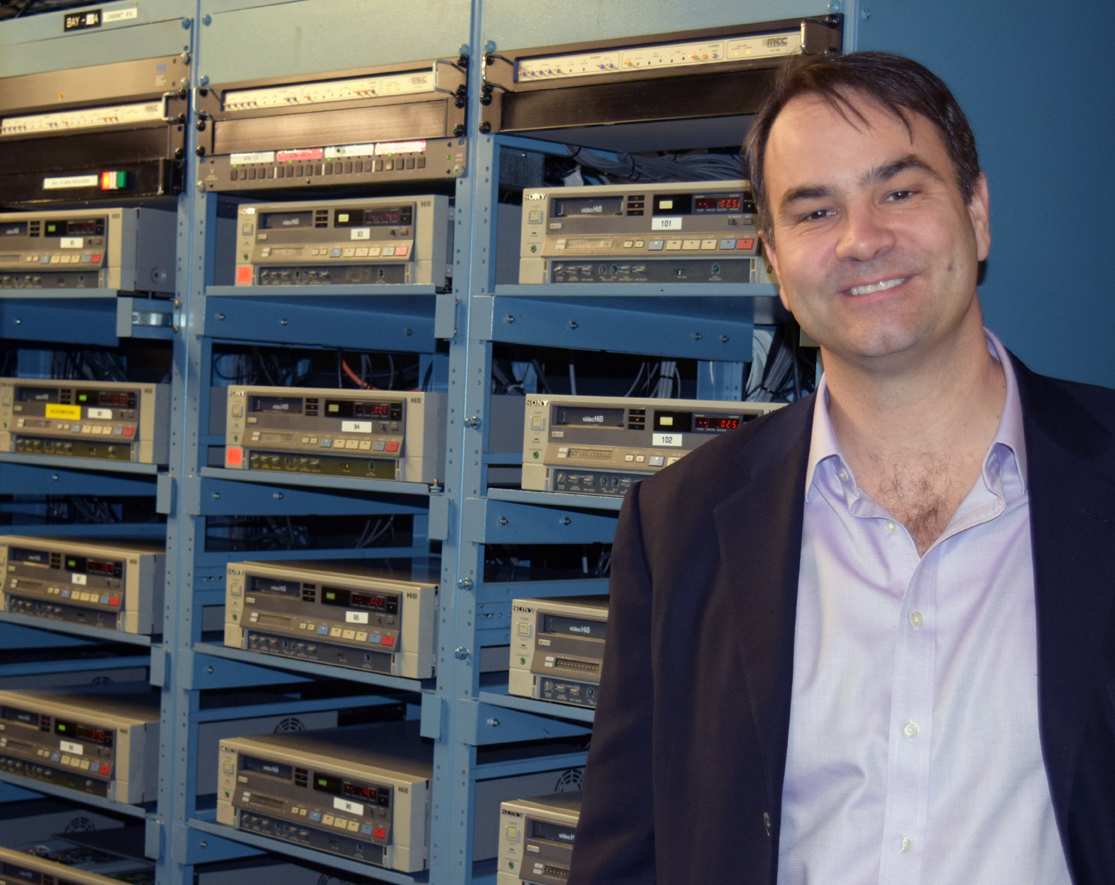
For the average airline passenger on a transcontinental or transoceanic journey, the ability to recline in a seat and watch an in-flight movie is a benign pleasure that helps fill time. But for Haitham Wahab, CEO of the Stamford-based post-production company CMI, getting that movie on the airplane”™s screen is a complex operation.
“From one feature film, you have many, many, many different deliverables,” said Wahab, whose company helps bring Hollywood fare to in-flight venues. “Say you are Sony, who is our customer, and you have the latest James Bond movie. The French airline will say, ”˜Okay, we want the James Bond movie in its original English language track, and the next language track needs to be French because we have many French customers. Then we want the German dub on the next track because we have a lot of German customers. And then we want Arabic subtitles to be available because we fly a lot to the Middle East.”™”
As part of its services to its entertainment industry clients, CMI handles the dubbing and subtitling to suit the language needs of the different viewers, but that”™s only a fraction of the considerations involved. If editing is required to erase mature content from the movie or the presentation aspect ratio of the picture gets changed, new digitized versions are required in all of those languages.
For the majority of in-flight presentations, the films are stored on special servers located on each airplane. The digital deliveries can only play on those servers and cannot be transferred in the manner that one shares software among computers. For an international company like Air France, Wahab said, the variations in the global fleet could result in five different in-flight systems, with each having its own file specifications for the in-flight entertainment.
That is just for one airline. Multiply that scenario by the scores of domestic and international carriers and the process gets repeated in endless variations. And that”™s just for digital deliveries.
“We still have delivery to airlines that require VHS and Hi8 videos,” Wahab added, referring to now-antiquated technology formats. “The airlines are not going to take a plane or a fleet out of service to change the entertainment systems. They will eventually, but they will have to wait for a whole bunch of reasons ”“ a plane that is not flying is losing money. Thus, we manage multiple generations of technologies.”
This is a world away from the initial focus of the company that began life in New York City in 1962 as Cine Magnetics Inc. It was originally a processing operation that made movie prints for shipment to East Coast theaters. The rise of video technologies in the 1970s saw the company shift from film to video duplicating, and that shifted again in the 1990s with the introduction of DVDs.
Wahab, formerly a principal and founding partner at the New York investment bank Daroth Capital Advisors, joined CMI in 2008 as chief financial officer. In December 2012, he teamed with Kenneth Wynne, the company”™s vice president and general manager, to purchase CMI for an undisclosed sum. Last October, CMI relocated its headquarters from a standalone building ”“ complete with a DVD manufacturing facility and warehouse ”“ in Armonk in Westchester County to a seventh-floor office suite at 9 West Broad St. in Stamford. The company, which has about 50 employees, also has offices in Studio City, California.
The manufacturing and warehousing components of the business are now outsourced, although CMI operates its own in-house repair shop for the older technologies due to a lack of outside businesses servicing those machines.
“We”™re not moving away from technology ”“ it is technology that is moving us away,” Wahab said. “We”™re still servicing the same types of clients as we did in the analog world.” Among those clients are Twentieth Century Fox Film Corp., Universal Pictures, The Weinstein Co., Starwood Hotels & Resorts Worldwide Inc. and New York University
In some ways, CMI has circled back to its origins, except that the reels of 35 mm film shipped to theaters have been replaced by Digital Cinema Package or DCP deliveries. Wahab noted that 98 percent of U.S. theaters have jettisoned the old reel-to-reel projectors for digital projection. This technology enables a more efficient transfer of films by CMI to and from other countries for dubbing and subtitle processing.
CMI is also focused on digital content distribution to the educational market. “We built a streaming platform where a college can buy content to make available to students,” Wahab said. “The college provides us with all of the IP addresses where they want the material made available, then we serve it up. This does away with distributing DVDs to libraries or students.”
For the company”™s near future, Wahab is focused on bringing CMI”™s post-production capabilities to online platforms like YouTube by creating multilingual videos for the business-to-business and business-to-consumer markets. Wahab noted Gillette”™s multinational outreach in promoting its shaving products, including Arabic-language videos detailing how to craft a Saudi royal-style goatee, as an example of what companies can do to connect with diverse international customers. But many corporations have yet to plumb YouTube”™s full potential, in Wahab”™s view.
“It is a big nut to crack, because the corporate market is not focused on content ”“ that is not their main value proposition,” he said. “We would be very interested in expanding into the corporate communication market, but also into product demonstration, thought leadership, internal communications ”“ anything that can and should be localized.”





















